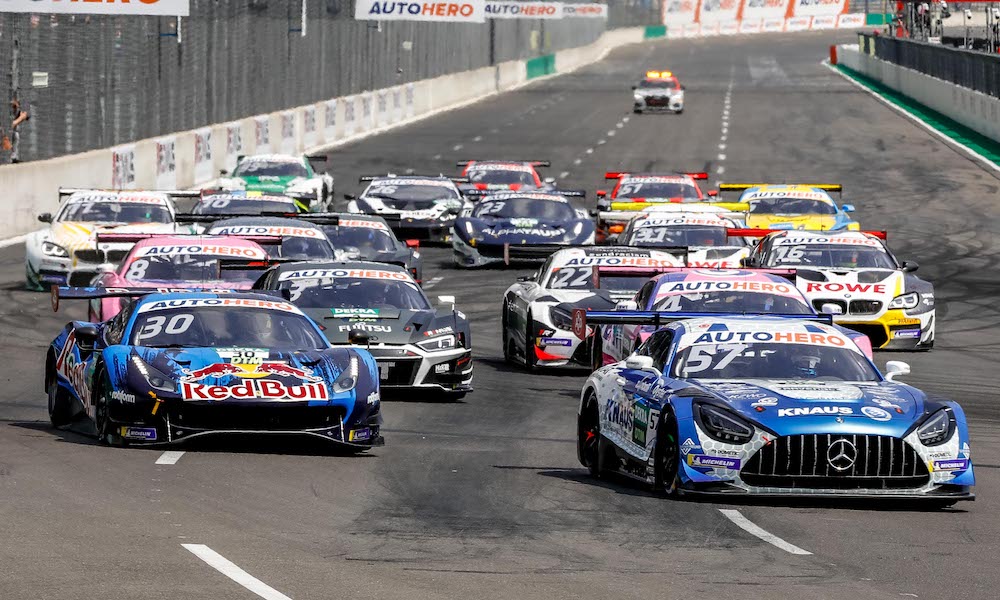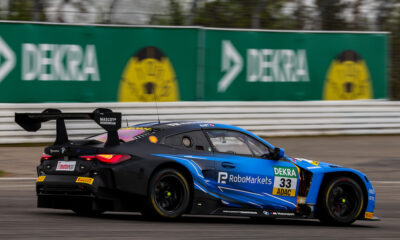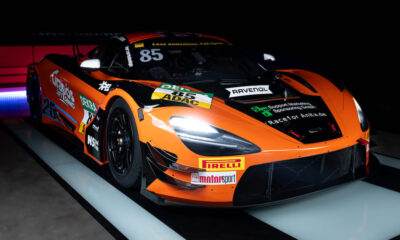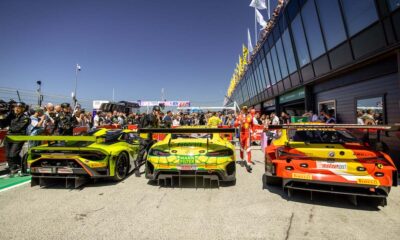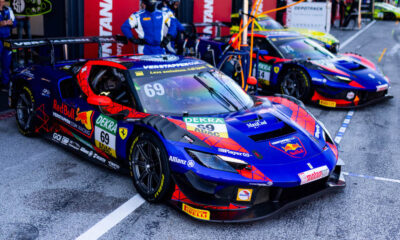The director of operations and events at ITR believes that the DTM is “stronger” than it was at the start of last year as the series approaches its second season with GT3 cars.
The DTM has made several rule changes in the off-season after evaluating the outcomes of its first year as a GT championship, which came after the demise of the Class One regs.
Frederic Elsner told Sportscar365 that the DTM organization “took a lot” that it learned in 2021 and is envisioning a “bright future” with its own take on a global racing platform.
“At the beginning, the situation didn’t really look good in 2020,” he said.
“But I wouldn’t change the new regulations with these cars for anything. We made something really good for an emergency situation.
“Fans like the amount of brands and driver-wise it is still top, top quality. It has so many advantages. With the way we do BoP with AVL, and media, it’s really good.
“I think it has a bright future, with the regs and knowledge we have now.
“We were really alert to make everything as right as possible, and we also gained a lot of knowledge over the weeks.
“With new regulations, a lot can change. We took a lot that we learned last year to put into the new regulations, so I think our basis is now stronger than last year.
“But we never thought that we were not going to be successful with it.”
Expanding on why he believes the series is in a stronger position heading into the second year of GT3 rules, Elsner suggested that there is no longer a need to win over organizations that were previously skeptical about the switch to a new formula.
The full-time DTM grid will surpass 20 drivers this year after having 19 entries in 2021.
“From 2020 going into the first season, there was a lot of doubt: what are they doing with GT3? Are they able to do a proper BoP? Will they survive? We had a lot of doubt,” Elsner said.
“It took a while to get the teams and drivers on board. Now we don’t have to tell anybody anymore that it’s going to be at least as good with these cars than the other ones.
“That is why we are in a stronger position. Grid-wise it’s going to be stronger. Last year we had a couple of guest starters, but this year we don’t need it.
“Last year was about people coming and trying it, brands and drivers. This year we are only allowing guest starters if it really makes sense for us, if it’s a big name or someone from DTM Trophy who is performing there. That’s why it is a stronger position.”
One of the hot topics that the series has needed to address over the winter is the use of team orders to influence action on the track.
Instructions from Mercedes-AMG at the Norisring season finale enabled Maximilian Goetz to win the deciding race and seal the championship.
After consultation with participants and an outcry from fans, the DTM issued the threat of expulsion to parties that are proven to enact team or manufacturer orders in 2022.
“We got so many emails and calls, and we could see how much the fans really care,” Elsner recalled of the reaction to the Norisring event.
“We are always on the side of our fans. The fans, for us, are really important in our system. We depend a lot on spectators and TV viewers.
“It didn’t pressure us, but it made it even clearer that we had to do something. We don’t want our fans to be taken for a ride around the paddock.
“If you get feedback like that, you are going to react a little harder than if nobody cared. I think we did it in the favor of our fans.
“We were really focused on sending out a statement to clear things out. You don’t want to lose somebody to something like that, so we definitely had an eye on it.”
Another key rules adjustment is the enforcement of choreography at pit stops.
This is to address the situation seen last year when Ferrari and Mercedes-AMG crews saved time by making use of locking mechanisms on their wheels.
In those cases, a mechanic could use a gun to loosen the front wheel but leave it for another crew member to remove and replace. The mechanic would then dash to the rear of the car and change that wheel, before returning to tighten the new one at the front.
The process saved time because teams running cars from other manufacturers needed to change the first wheel in full before moving to the opposite end of the car.
Tire changers must now start at the rear and work their way forward, which is designed to be safer as well as fairer because the driver can see the pit crew completing the stop.
Furthermore, the air jack operator can no longer double up as a tire change helper.
“Now we have only four people working on the pit stop,” Elsner explained.
“So you have two people on both sides, with one who is exclusively holding the gun. They have to start at the back and have to finish the whole tire, then go to the front.
“The advantage, even though it was small, is gone now. Everybody has the same choreography of starting from the back and going to the front. It should be as equal as possible with these cars.”
Further rules changes include the deployment of Full Course Yellow periods when necessary and an additional set of new tires from the second race weekend onwards.
A single championship point will be awarded to the driver with the fastest lap in each race.
The sporting updates come at a time when the DTM is attempting to cement its GT3-based championship as a key part of the long-term ITR motorsport strategy.
“GT3, for us, is the future, combined with the other pillars that we have,” Elsner suggested.
“We are also working on big plans for DTM Electric, but it’s nothing that will replace DTM.
“We now have Martin Tomczyk as our DTM Trophy series manager. We have DTM Classic where another former DTM driver [Peter Oberndorfer] is our manager there.
“In esports, we have a program for the winner to get a DTM Trophy ride. We are really on broad shoulders, not just on the DTM. I think that’s what makes it look really bright in the future.”

